Sencha, a type of Japanese green tea, might be one of the most commonly misbrewed teas in the world. This is because the optimal water temperature and steeping time for brewing it differ from those of black tea, which is enjoyed worldwide. Here, let's learn the proper brewing method, traditionally used in Japan, to achieve a refined flavor that is rich in umami and has minimal bitterness.
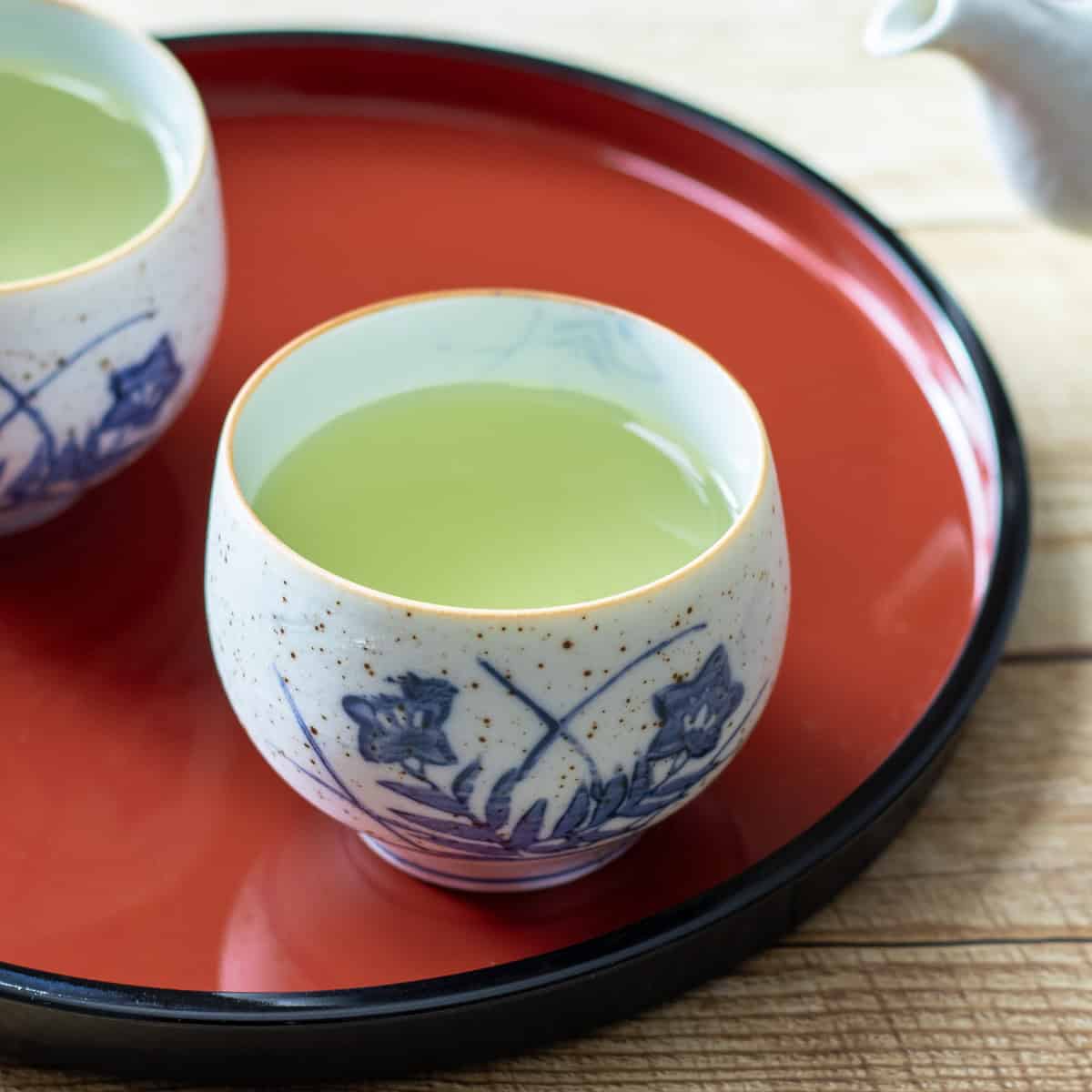
Jump to:
- What is Sencha?
- Optimal water temperature
- How to achieve the optimal water temperature
- Ideal steeping time
- Traditional pouring technique
- Brewing the second infusion
- Choosing the right water
- How to cold brew sencha
- Exploring the world of sencha
- 📋Step-by-step recipe
- Shelf life and proper storage of sencha leaves
- What to know about expired sencha
- Japanese recipes that pair well with sencha
- Recipe card
What is Sencha?
In Japan, green tea is known as a classic beverage, and when people think of it, they typically imagine sencha. Sencha is the most widely consumed type of Japanese tea, accounting for over 70% of the country’s green tea production. It is made by steaming freshly picked tea leaves to prevent oxidation, rolling them into thin, needle-like shapes, and then drying them. The main difference between sencha and black tea is that while black tea undergoes oxidation, sencha—along with other Japanese green teas—does not.
The key to brewing sencha properly is to extract as much umami as possible while minimizing astringency and bitterness. To achieve this, it is important to use water at the appropriate temperature and steep the leaves for the right amount of time. Once you learn how, it becomes easy. Mastering the brewing method will help you bring out the best flavors in sencha.
In addition to sencha, there are many other types of green tea in Japan, such as gyokuro, matcha, bancha, and hojicha. However, while all of these are types of green tea, they are distinct from sencha. It is important to note that the proper brewing methods also differ from those of sencha.
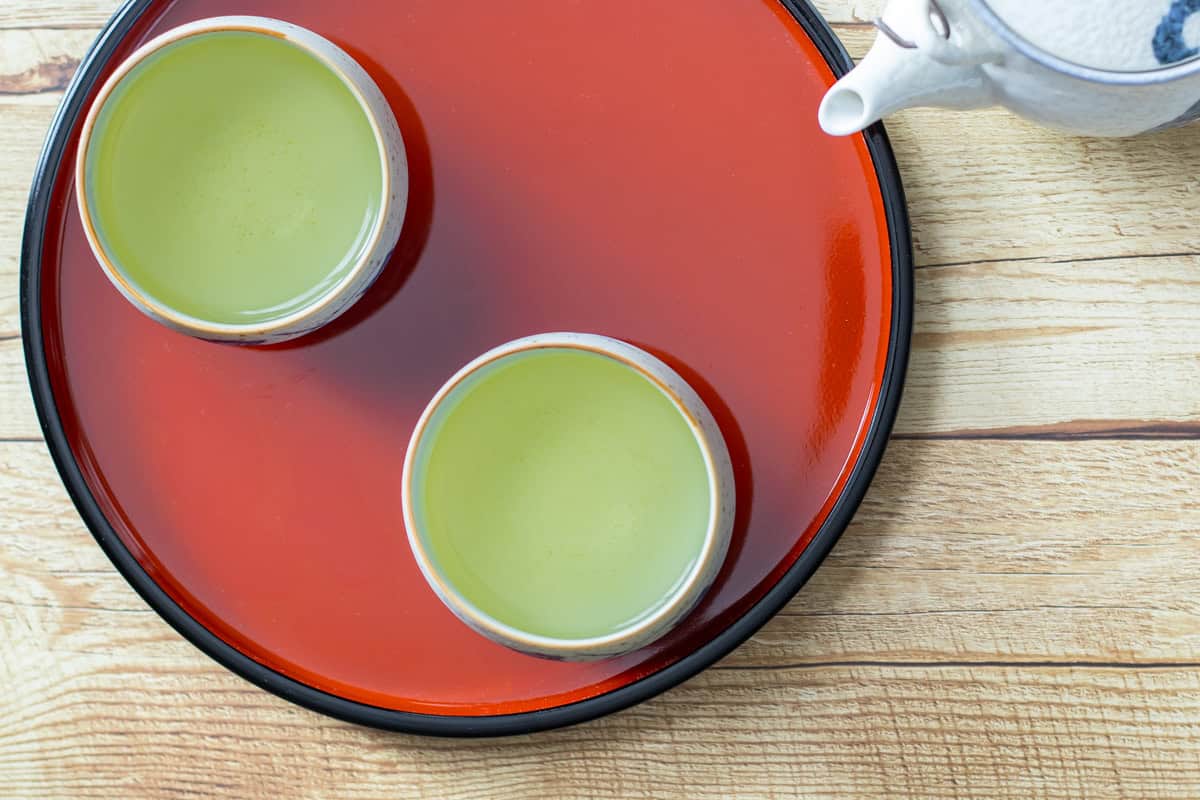
Optimal water temperature
The temperature of the water used to brew sencha is one of the most important factors in bringing out its umami. Be sure to use water at a temperature of 158-176℉ (70-80℃), rather than freshly boiled water. There is a reason why this temperature range is recommended for sencha.
Sencha contains three key components: theanine, which contributes to umami; catechins, which add astringency; and caffeine, which adds bitterness. While all three components can be extracted at any temperature, they each have an optimal range for extraction. Theanine, which provides umami, is best extracted at temperatures above 122℉ (50℃), while catechins and caffeine are extracted more readily at temperatures above 176℉ (80℃). This means that if you use freshly boiled water at 212℉ (100℃), you will extract not only umami but also a significant amount of astringency and bitterness.
Sencha tastes best when its umami is emphasized, while astringency and bitterness are kept in check. The optimal range of 158-176℉ (70-80℃) for sencha is based on the characteristics of these components, while still allowing you to enjoy a pleasantly warm cup of tea.
For more precise brewing, high-grade sencha made from young, tender tea leaves tastes best at temperatures closer to 158℉ (70℃), as this temperature enhances its umami. On the other hand, normal-grade sencha has a flavorful, well-balanced taste at a temperature closer to 176℉ (80℃). For the best results, feel free to experiment with the water temperature according to the grade of your sencha.
How to achieve the optimal water temperature
Even if you know that the optimal water temperature for brewing sencha is between 158-176℉ (70-80℃), you might still find it difficult to estimate the actual water temperature. But don’t worry—Japanese people don’t measure the temperature every time they brew tea. There are two simple methods to achieve this temperature range.
The first method is to transfer water to different vessels.
Hot water naturally cools when poured from one vessel to another. Taking advantage of this property, traditional sencha preparation involves first pouring freshly boiled water into a teacup and then transferring it to a teapot to lower the temperature. In other words, transferring boiled water from the kettle to a teacup, then to a teapot in that order, brings the water temperature down to around 176℉ (80℃).
Each time water is transferred to a new vessel, its temperature drops by about 18℉ (10℃). If you want to achieve a water temperature around 158℉ (70℃), simply prepare two teacups and pour the water from the kettle in the following order: teacup A, teacup B, teapot. This method not only lowers the water temperature but also warms the teacups and helps you gauge the right amount of water. Unless you live in an area with extreme cold or at a high altitude, this method should work well.
The second method is to use an electric kettle with a temperature control feature, which can heat and maintain water at 158℉ (70℃) or 176℉ (80℃).
Many electric kettles in Japan have this feature, and you may also find similar models available in your country. If you drink sencha regularly, this can be a very convenient option.
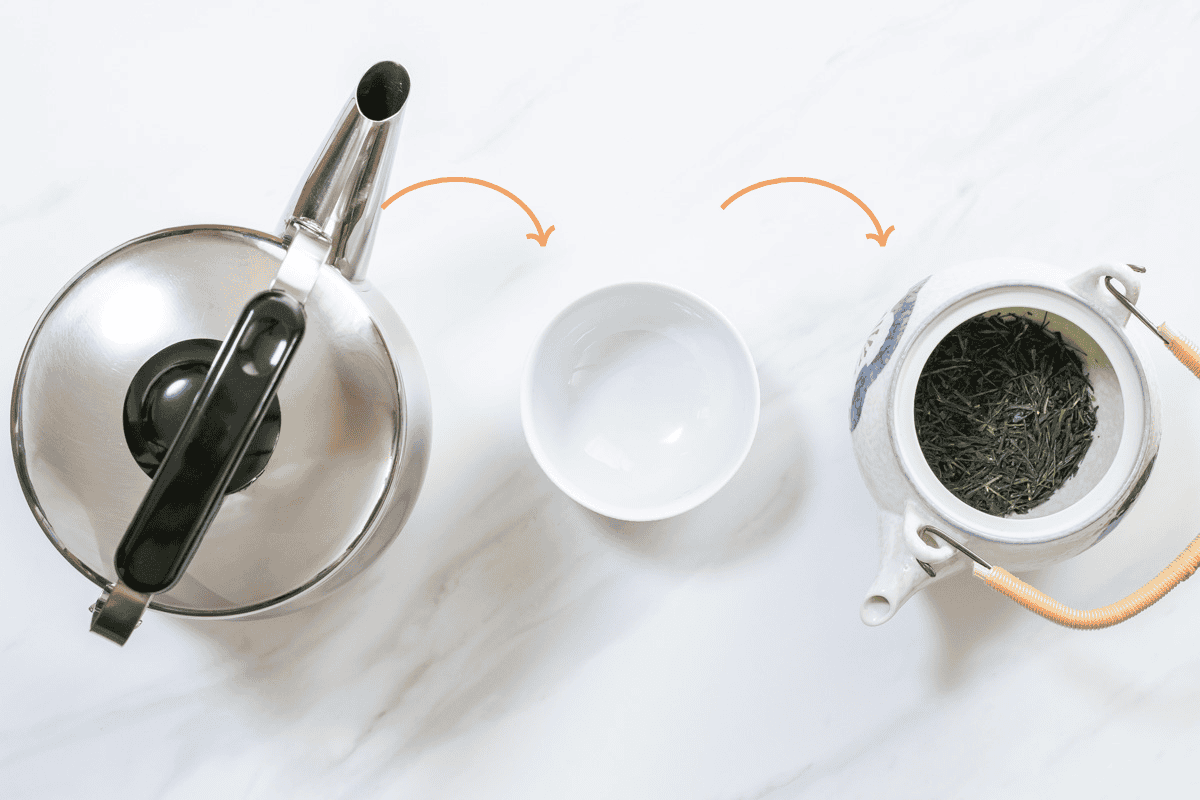
Ideal steeping time
When brewing a delicious cup of sencha, following the steeping time is just as important as using the optimal water temperature. If the tea leaves are steeped for too long, they will release excessive amounts of astringency and bitterness, which can negatively affect the flavor.
A typical steeping time for sencha is 1 minute. However, if the packaging of your sencha specifies a recommended steeping time, be sure to follow it. This is because the ideal steeping time varies depending on the grade of the tea and the length of the steaming process during production.
As a general guideline, high-grade sencha should be steeped for 2 minutes, lightly steamed (asamushi) sencha for 1 to 2 minutes, and deeply steamed (fukamushi) sencha for only 30 seconds to 1 minute. If there are no instructions on the package, 1 minute is a safe choice. In any case, sencha should never be steeped as long as black tea, so be careful not to oversteep it.
Traditional pouring technique
When pouring sencha, there is also a traditional Japanese method.
It is a technique used when serving tea into multiple teacups to ensure an even distribution of flavor. Instead of filling one cup at a time, the tea is poured gradually into each cup in turn. For example, if there are three cups, A, B, and C, the tea is poured in the following order: A → B → C → C → B → A → A → B → C, and so on. This method helps ensure that each cup receives tea of consistent strength.
By the way, when pouring from the teapot, it is important to tilt it until the last drop is released. Additionally, the teapot lid should be left off after pouring. This helps preserve the flavor for the second brewing, which will be explained next.

Brewing the second infusion
Once you have finished your first cup, it is time to enjoy a second cup of sencha. Unlike black tea, sencha leaves retain much of their flavor after the first brewing, so it is common to brew a second infusion by adding hot water to the teapot again.
The method for brewing the second infusion is slightly different from that of the first.
This time, use slightly hotter water, around 194-212℉ (90-100℃), and pour it into the teapot. Then, after just 5-10 seconds, pour the tea into your teacups. The reason for this difference in brewing is that the tea leaves are already open and release their flavor more quickly. While it won’t have the delicate flavor of the first infusion, the second infusion has its own unique appeal.
Although the flavor will be weaker, you can still make a third infusion using the same method. After the third brewing, the tea leaves will have lost most of their flavor, so further brewing is not recommended.
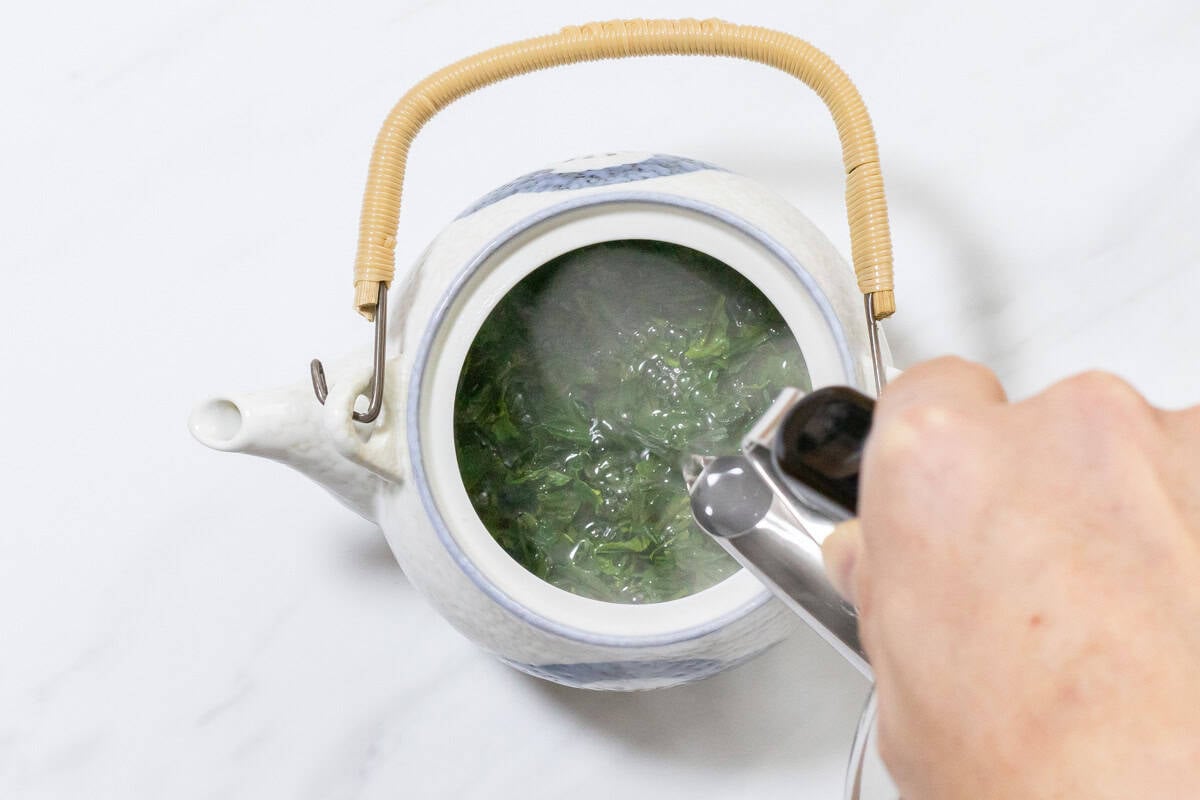
Choosing the right water
I should also discuss the type of water suitable for brewing sencha.
Water is generally classified as either hard or soft, depending on its mineral content. For sencha, soft water is the best choice. Hard water, which has a higher mineral content, makes it more difficult to extract umami from the tea leaves and tends to bring out astringent and bitter flavors. In Japan, most water is naturally soft, but if the water in your region is hard, you might want to consider using bottled soft water for a better-tasting cup of sencha.
Even if you are using soft water, if it is tap water, you might want to let it sit uncovered in a kettle for about 5-6 hours before boiling. Although this varies depending on where you live, tap water often contains chlorine, which is used for disinfection. Letting it sit allows the chlorine to dissipate, resulting in a cleaner-tasting cup of sencha.
While you can brew sencha with any type of water, if you are aiming for the best possible flavor, it is definitely worth paying attention to your choice of water.
How to cold brew sencha
Sencha is typically brewed with hot water, but it can also be brewed with cold water. The advantage of cold brewing is that it brings out a stronger umami, while reducing astringency and bitterness compared to hot brewing.
The process is time-consuming yet straightforward: simply add 10 grams (about 4 teaspoons) of sencha leaves per 1 liter (about 4 cups) of water to a pitcher. Let it steep for 4 to 8 hours to allow the flavors to fully develop. It is especially refreshing in hot weather.
Leaving the tea leaves in the water for too long can increase astringency and bitterness, so be sure to remove them once the extraction is complete. Since cold-brewed sencha is not boiled, it is best consumed within 2 days.
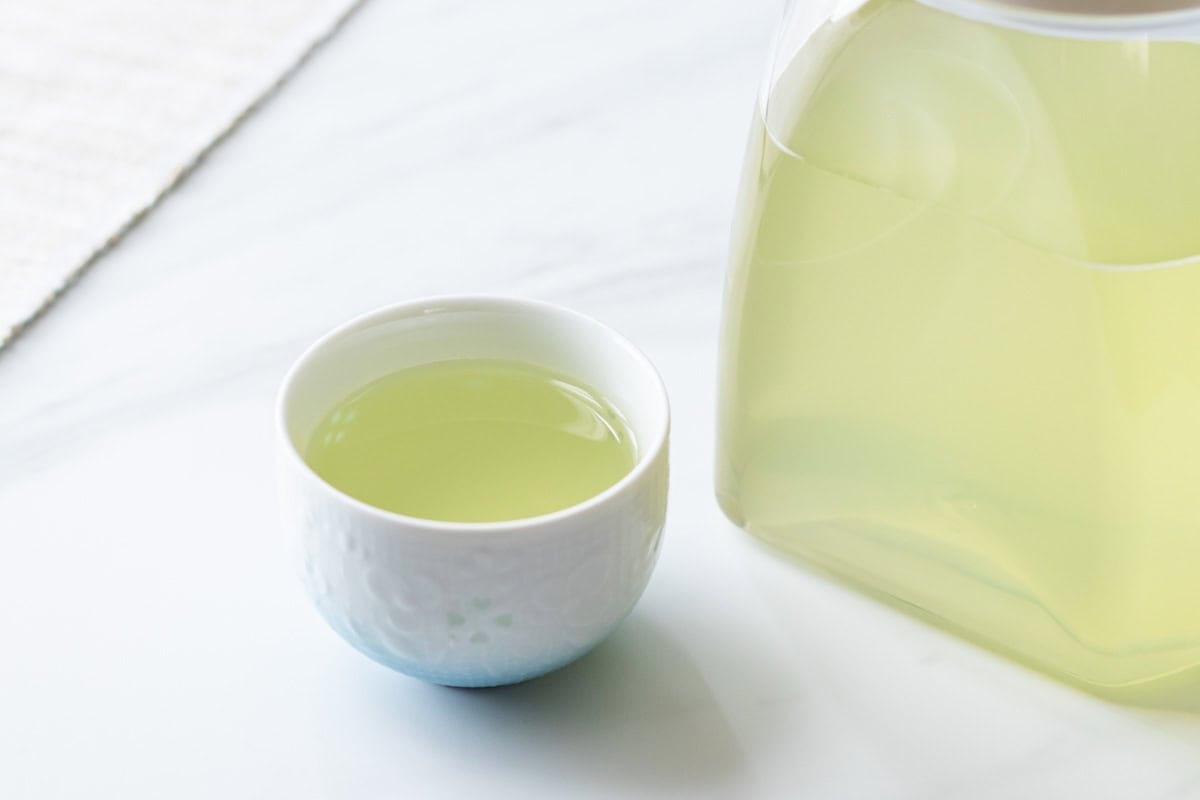
Exploring the world of sencha
If you follow the guide above (or the recipe below, which provides a brief summary), you should be able to brew a delicious cup of sencha. The world of sencha is deep and diverse, with flavors varying greatly depending on the region and grade of the tea. In Japan, some of the most famous tea-producing regions include Uji (Kyoto), Kawane (Shizuoka), Sayama (Saitama), Yame (Fukuoka), Chiran (Kagoshima), and Asamiya (Shiga). If you have the chance to compare different varieties, you might find it fascinating to explore their unique characteristics.
Personally, my favorite is Asamiya tea. I've fallen in love with its delicate sweetness and beautiful pale green color. What about you?
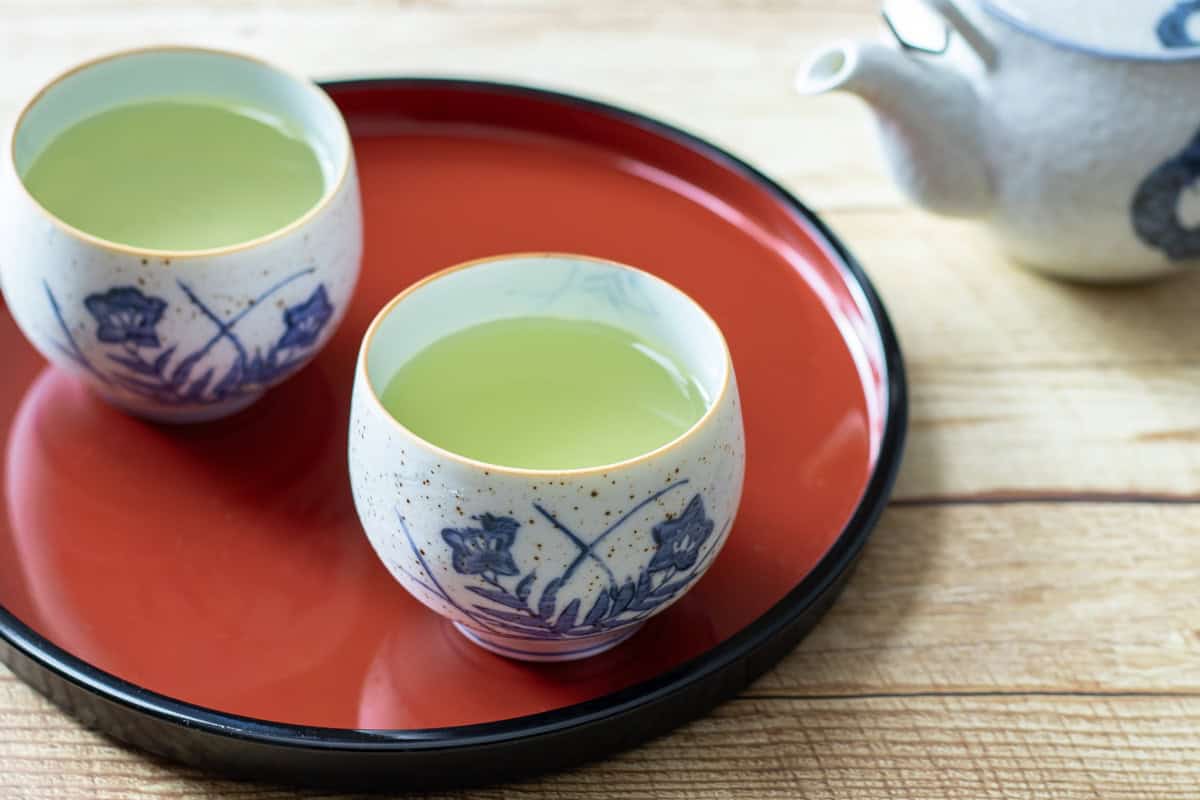
📋Step-by-step recipe
Ingredients
For hot brewing:
- sencha tea leaves (green tea leaves) (The recommended amount is 1 teaspoon [2-3 g] per ⅖ cup [100 ml] of water.)
- soft water (Use an amount that suits the size of your teacups.)
For cold brewing:
- 4 tsp sencha leaves
- 4 cups soft water
Instructions
For hot brewing:
🕒 Total: 5 mins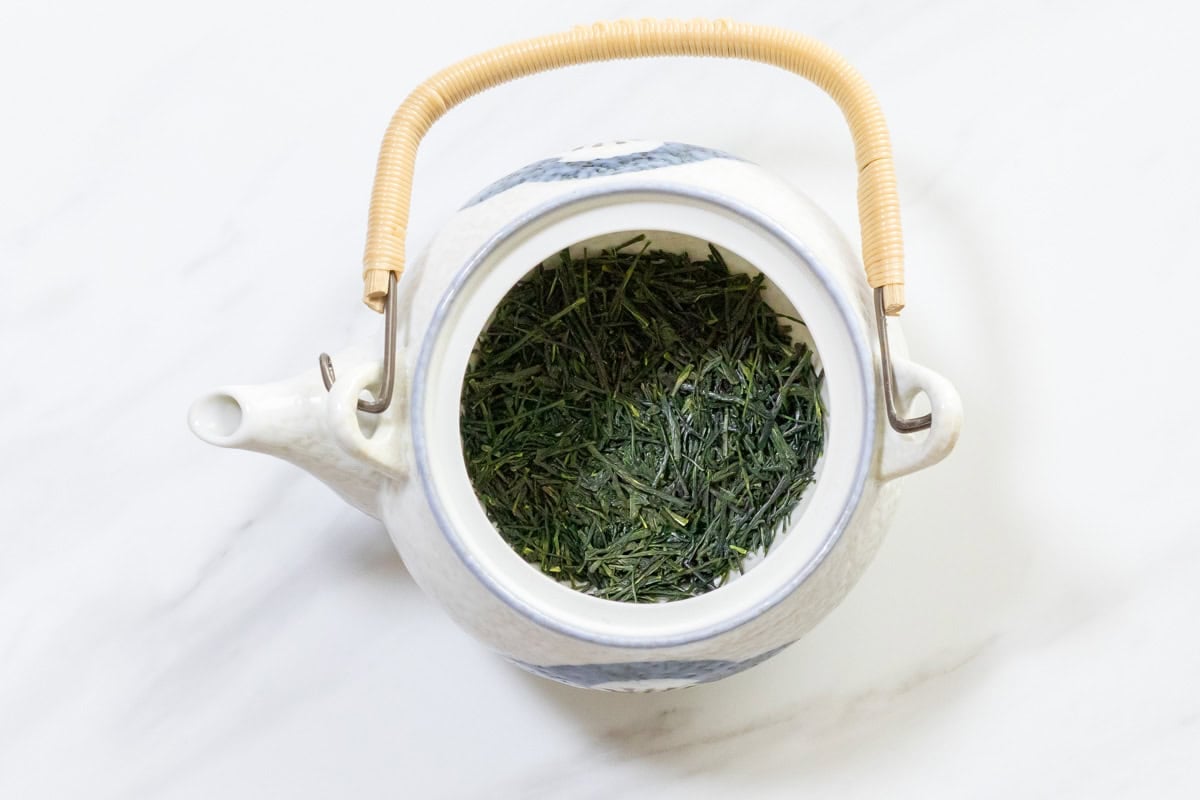
Step 1
Put sencha leaves into a teapot.
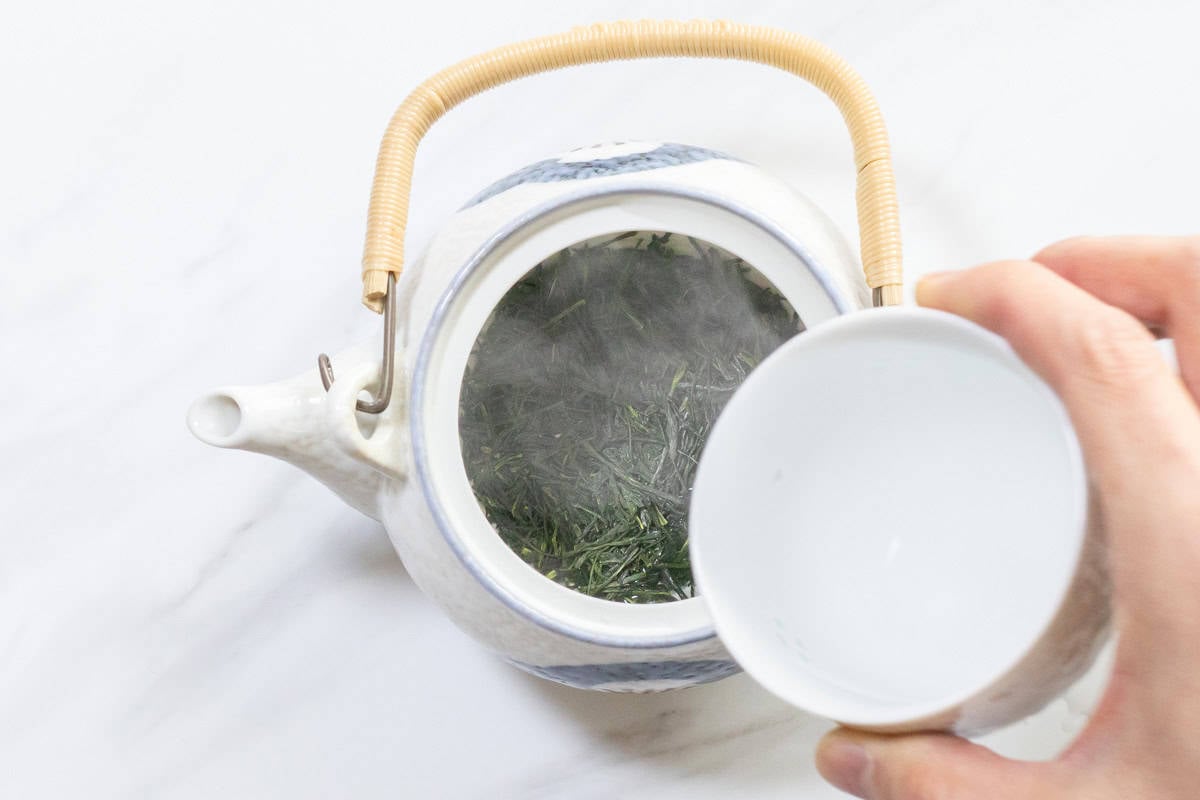
Step 2
Fill a kettle with soft water and bring it to a boil. Pour the freshly boiled water into each teacup, filling each about 80% full. Then, transfer the water from each cup to the teapot, cover it with the lid, and let it steep for 1 minute.
The technique used here is a traditional Japanese method for brewing sencha at the optimal temperature. If the water you are using is already between 158-176℉ (70-80℃), you can pour it directly into the teapot. For more details, refer to the "How to Achieve the Optimal Water Temperature" section above.
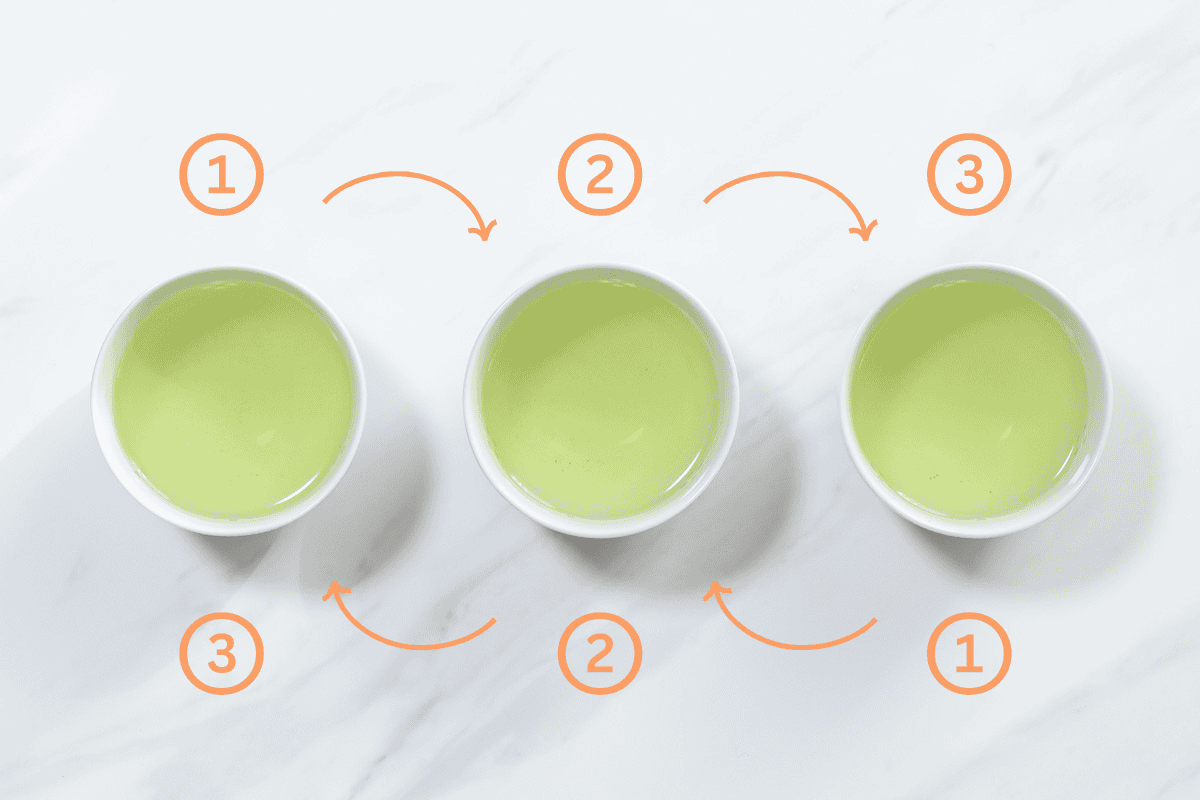
Step 3
Tilt the teapot and pour the tea gradually into each cup in turn to ensure an even distribution of flavor. If there are three cups (A, B, and C), pour in the following order: A → B → C → C → B → A → A → B → C, and so on. This helps ensure the tea has consistent strength. Now, your sencha is ready to enjoy.
For the next step, make sure to pour out every last drop of tea and leave the teapot lid off.
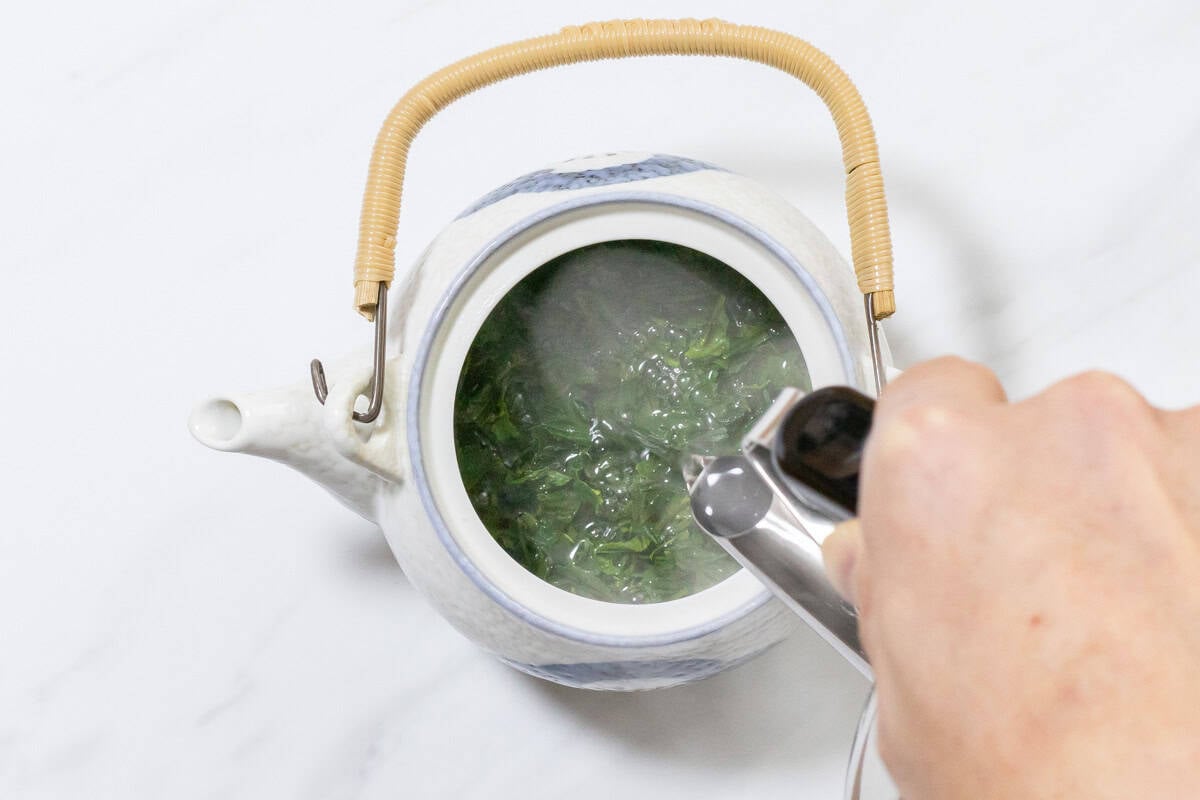
Step 4
You can enjoy a second infusion of sencha as well. Refill the kettle with soft water and bring it to a boil. Pour hot water into the teapot at a slightly higher temperature of 194-212℉ (90-100℃) than before, and let it steep for 5-10 seconds. Then, just like before, pour the tea evenly to maintain a consistent flavor, and your second infusion of sencha is ready to serve.
A third infusion can be made in the same way, although the flavor will be weaker.
For cold brewing:
🕒 Total: 4-8 hrs
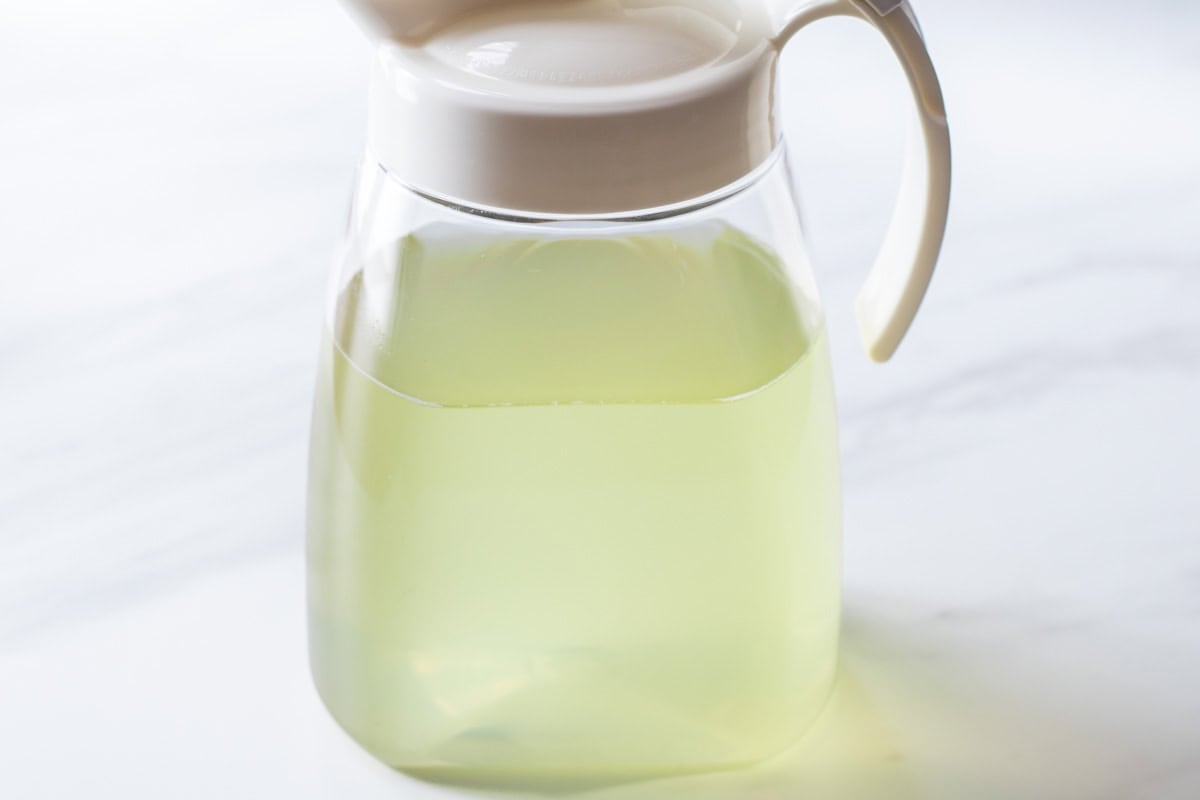
Step 1
Put sencha leaves and soft water into a pitcher and let them steep in the refrigerator for 4 to 8 hours. After steeping, strain out the leaves.
For added convenience, you can place the tea leaves in a tea bag before steeping or use a pitcher with a built-in filter.
Shelf life and proper storage of sencha leaves
The expiration date of sencha is printed on the package, but once opened, it is best to consume it within a month. The leaves gradually lose their quality over time due to exposure to moisture and oxygen.
For storage, a cool, dark place is ideal. Keeping it in the refrigerator is also an option, but since refrigerators tend to be humid, be sure to store it in an airtight container. While freezing is possible, it is not recommended, as condensation can easily form.
What to know about expired sencha
You might sometimes overlook the expiration date on the sencha you bought. However, there is no need to throw it away, especially if it has not been opened yet. While the flavor may have faded, you can still drink it as long as it is within about a year past the expiration date.
Since sencha leaves don’t contain moisture, they typically won’t pose a risk to your health. As a general rule, if it still tastes good to you, it should be safe to drink.
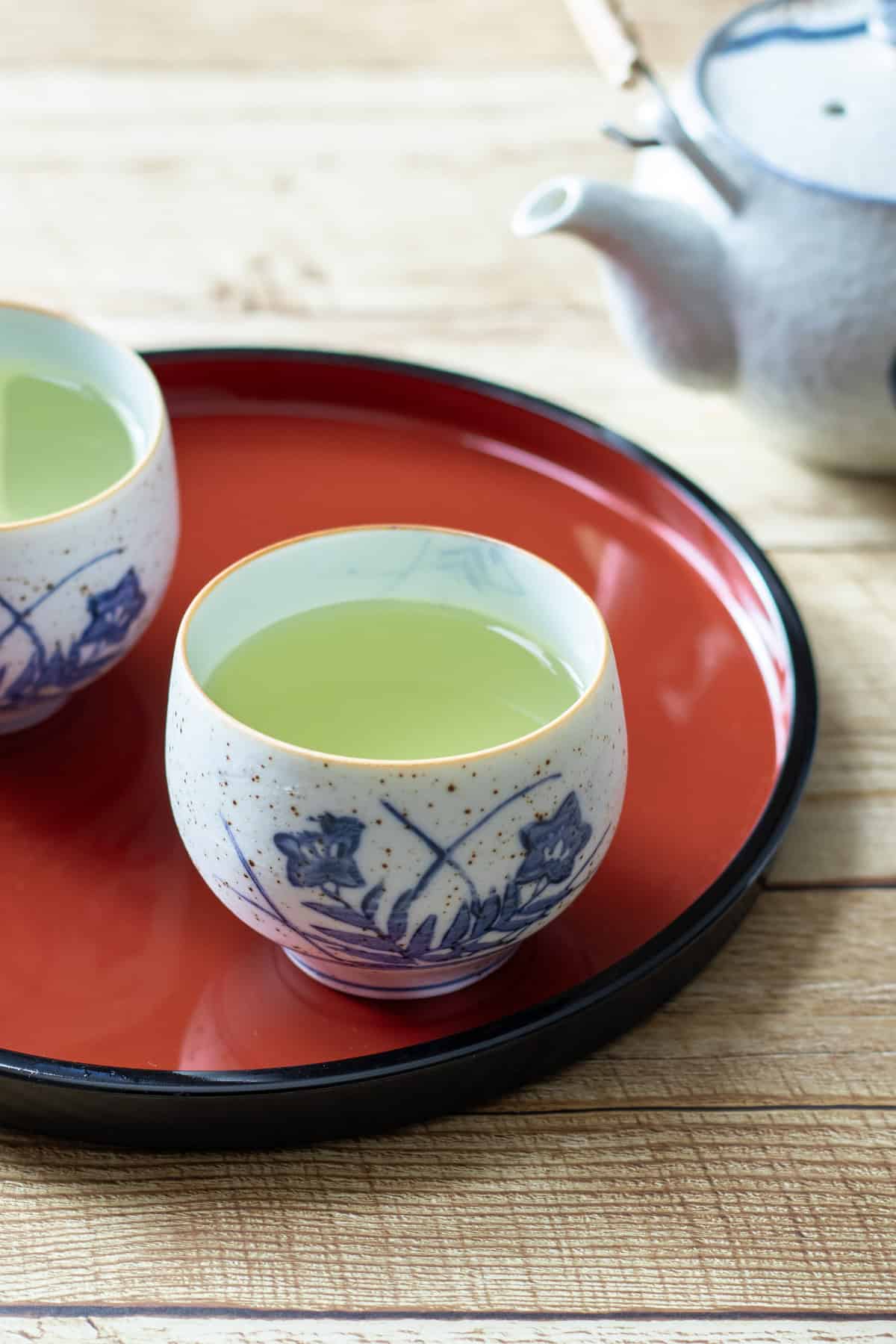
If you try this recipe, I’d love to hear what you think. Please consider leaving a review and star rating in the comments below. If you enjoyed it, I’d really appreciate it if you shared it with your friends.
Japanese recipes that pair well with sencha
Recipe card

How to Brew Sencha Green Tea — A Traditional Japanese Guide
Ingredients
For hot brewing:
- sencha tea leaves (green tea leaves) (The recommended amount is 1 teaspoon [2-3 g] per ⅖ cup [100 ml] of water.)
- soft water (Use an amount that suits the size of your teacups.)
For cold brewing:
- 4 tsp sencha leaves
- 4 cups soft water
Instructions
For hot brewing:
- Put sencha leaves into a teapot.
- Fill a kettle with soft water and bring it to a boil. Pour the freshly boiled water into each teacup, filling each about 80% full. Then, transfer the water from each cup to the teapot, cover it with the lid, and let it steep for 1 minute.The technique used here is a traditional Japanese method for brewing sencha at the optimal temperature. If the water you are using is already between 158-176℉ (70-80℃), you can pour it directly into the teapot. For more details, refer to the "How to Achieve the Optimal Water Temperature" section above.
- Tilt the teapot and pour the tea gradually into each cup in turn to ensure an even distribution of flavor. If there are three cups (A, B, and C), pour in the following order: A → B → C → C → B → A → A → B → C, and so on. This helps ensure the tea has consistent strength. Now, your sencha is ready to enjoy.For the next step, make sure to pour out every last drop of tea and leave the teapot lid off.
- You can enjoy a second infusion of sencha as well. Refill the kettle with soft water and bring it to a boil. Pour hot water into the teapot at a slightly higher temperature of 194-212℉ (90-100℃) than before, and let it steep for 5-10 seconds. Then, just like before, pour the tea evenly to maintain a consistent flavor, and your second infusion of sencha is ready to serve.A third infusion can be made in the same way, although the flavor will be weaker.
For cold brewing:
- Put sencha leaves and soft water into a pitcher and let them steep in the refrigerator for 4 to 8 hours. After steeping, strain out the leaves.For added convenience, you can place the tea leaves in a tea bag before steeping or use a pitcher with a built-in filter.
Notes
- For cold brewing, the total brewing time is 4 to 8 hours. Since it is not boiled, it is best consumed within 2 days.

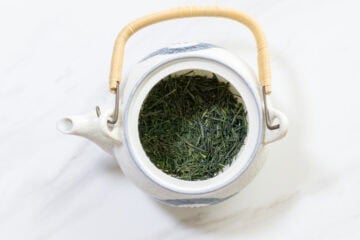
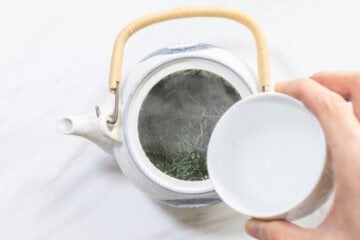
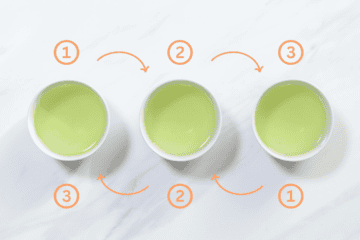
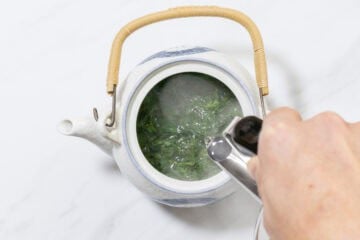
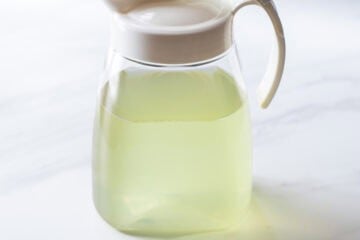
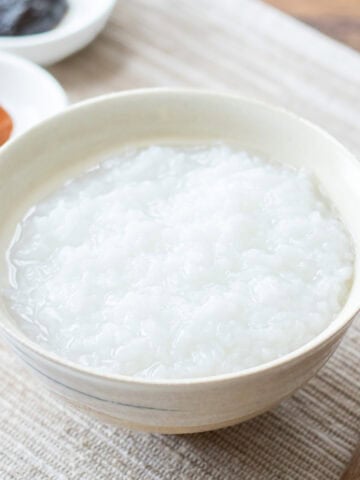
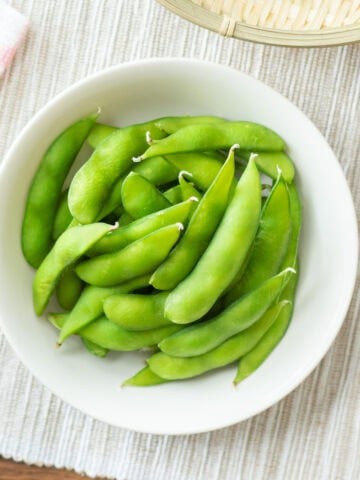

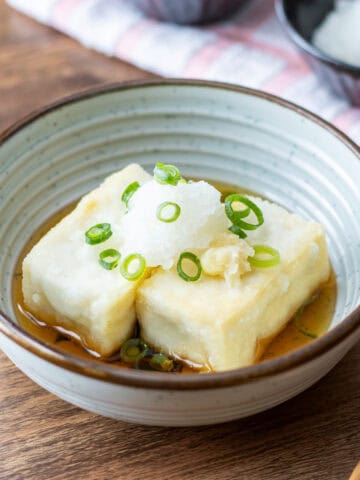
Leave a Rating and a Comment